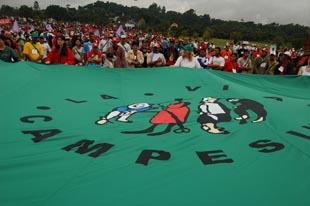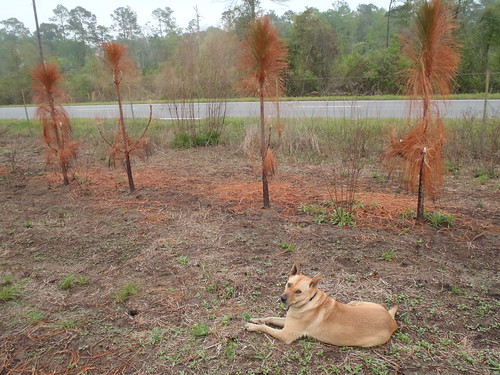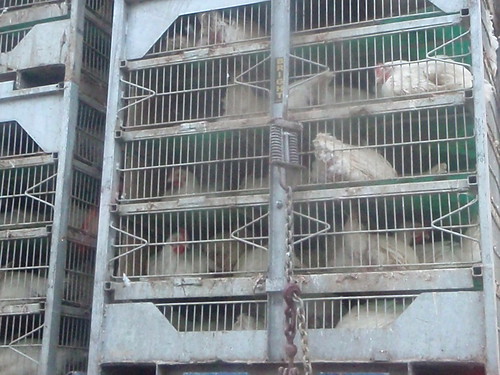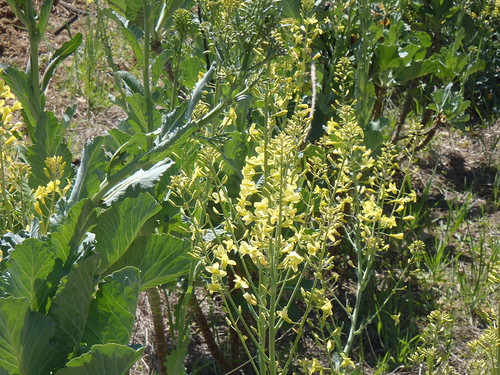Brown Dog didn’t get bit, but Yellow Dog did. Continue reading
How many raw milk drinkers?
 A lot more than most people think, or that the CDC has said much about.
A lot more than most people think, or that the CDC has said much about.
Steve Bemis digs into the Population Survey Atlas of Exposures, 2006-2007
It was huge, conducting telephone interviews with 17,372 interviewees representing a population of 45,883,553 people in the listed ten states, from May 2006 to April 2007.So, how many raw milk drinkers? Continue reading
Burned-over longleaf
The yellow dog is right: I burned those trees! Before picture of one of them: Continue reading
Gretchen and the dogwoods
Via Campesina: locavores worldwide
 Claimed to be
“the largest social movement in the world, with more than 400 million members,”
it’s
Via Campesina:
Claimed to be
“the largest social movement in the world, with more than 400 million members,”
it’s
Via Campesina:
Enterremos el sistema alimentario industrial!Peasant agriculture as in local agriculture. It’s a global movement of locavores!
La agricultura campesina puede alimentar al mundo!
Bury the corporate food system!
Peasant agriculture can feed the world!
They’re planning an International day of Peasant’s Struggles on 17 April 2011: Continue reading
Factory Chickens
I recognized them from Food, Inc. They get them out of the chicken houses at night. It was maybe around 8 o’clock in the morning. (7:51 according to the timestamp.) According to Food, Inc., they’re put in the cages as little babies, and they put the sides down. These chickens have probably never seen daylight before: Continue reading
Wild azaleas blooming in the sunset, March 2011
Nope, not honeysuckle: that’s a vine; these azaleas grow on a bush.
These ones had not quite opened yet: Continue reading
Planted longleaf pines, 17 March 2011
 Pinus palustris of various sizes.
We planted these trees four years ago.
This one is bolting up from grass stage.
Pinus palustris of various sizes.
We planted these trees four years ago.
This one is bolting up from grass stage.
Bottle brush stage (plus starting some branches): Continue reading
Genetic engineering based on obsolete science and regulatory capture –peer-reviewed research
 Here is peer-reviewed evidence that we are the guinea pigs
for worldwide experimentation on the food supply
using fatally-flawed science.
Experimentation that isn’t needed because we already know how to do it right.
Here is peer-reviewed evidence that we are the guinea pigs
for worldwide experimentation on the food supply
using fatally-flawed science.
Experimentation that isn’t needed because we already know how to do it right.
We already knew Monsanto is blocking independent GMO research in the U.S. (L.A. Times op-ed) and there are numerous examples of Monsanto gaming regulatory systems. Now Ken Rosenboro of The Organic and Non-GMO Report tells us there’s peer-reviewed research that says:
…the technology is based on obsolete science, that biotechnology companies such as Monsanto have too much influence on government regulators and “public” universities, and that university scientists are ignoring the health and environmental risks of GM crops.The research is published as two papers by Don Lotter in the International Journal of the Sociology of Agriculture and Food:
Part 1: The Development of a Flawed Enterprise
Part 2: Academic Capitalism and the Loss of Scientific Integrity
In a 7 August 2009 article in FoodFirst, The Genetic Engineering of Food and the Failure of Science, Don Lotter explains what’s in those two papers: Continue reading





